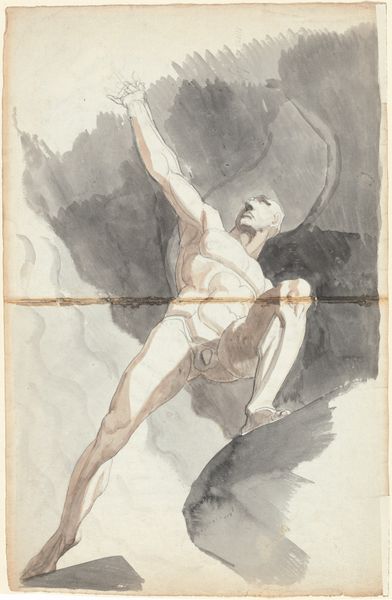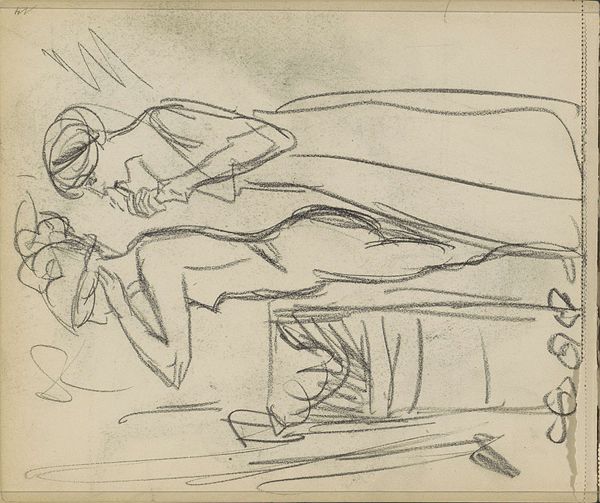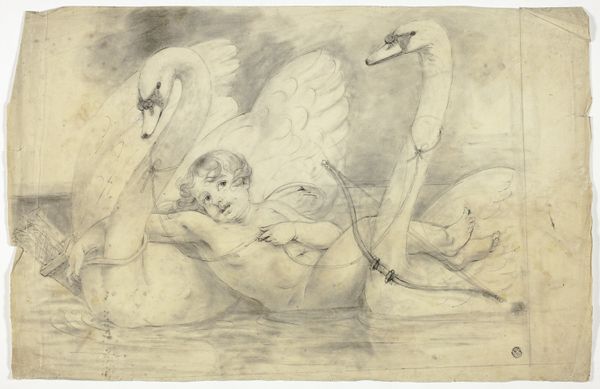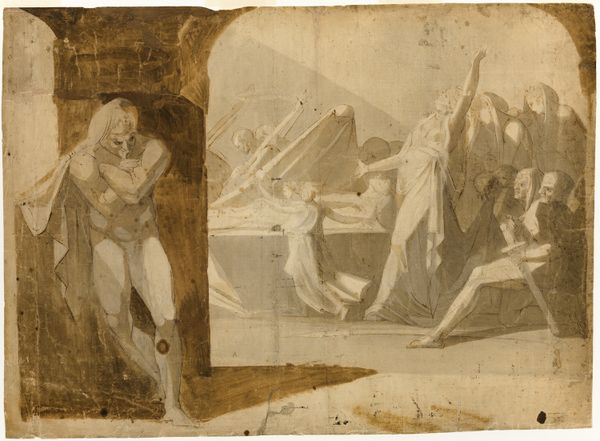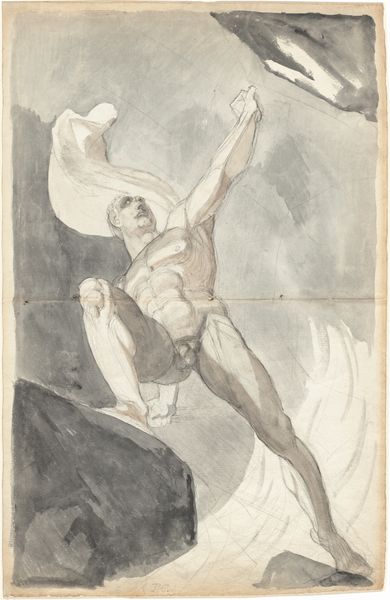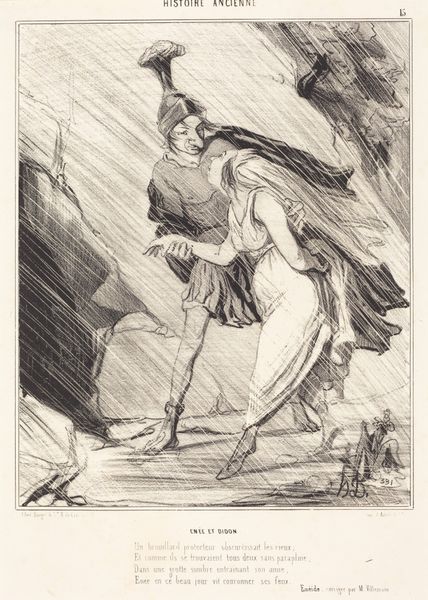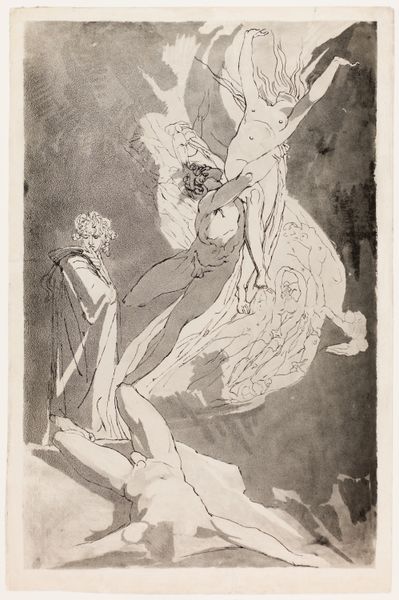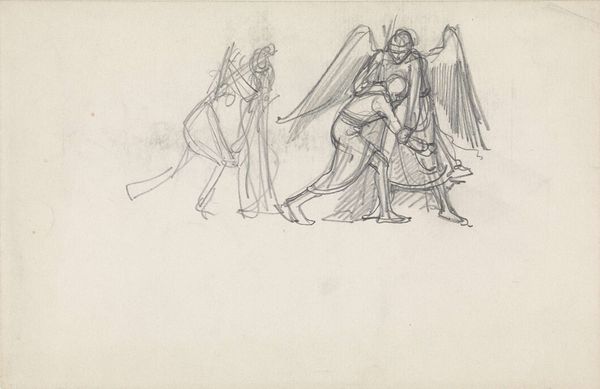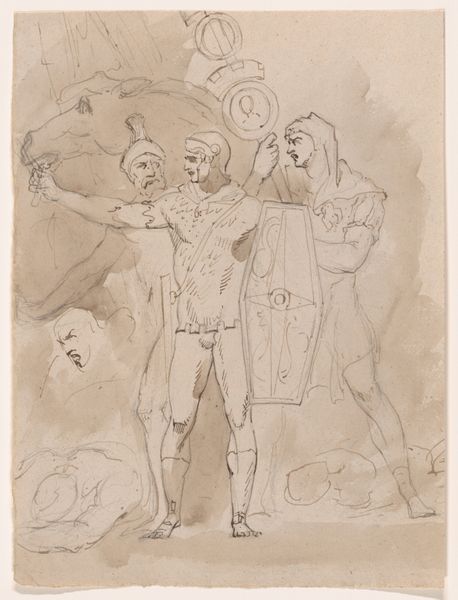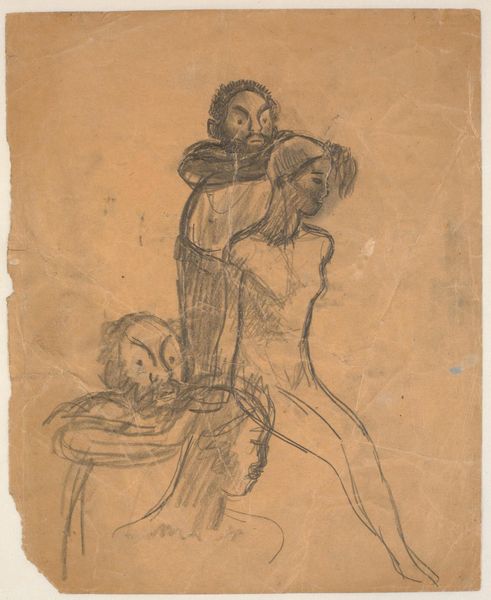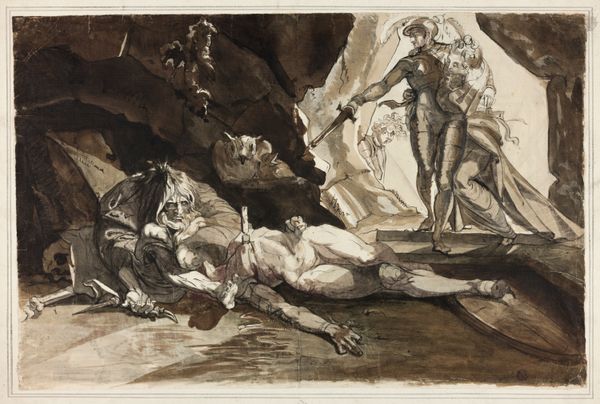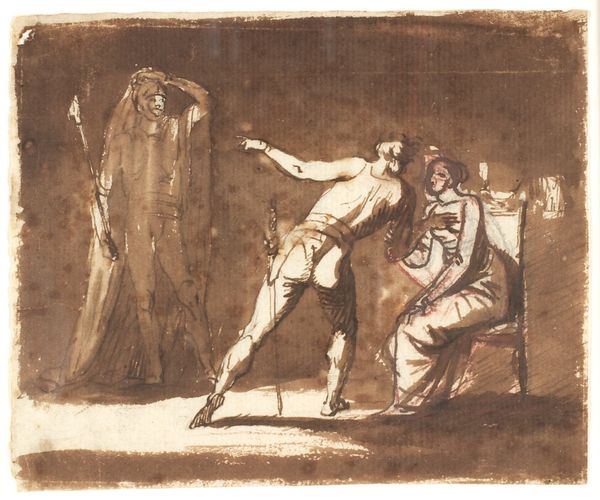
Macbeth and the Three Witches. Illustration for Shakespeare's Macbeth, IV,1 1773
0:00
0:00
Dimensions: 225 mm (height) x 369 mm (width) (bladmaal)
Editor: We’re looking at Johann Heinrich Füssli's "Macbeth and the Three Witches" from 1773. It's a watercolor illustration, and honestly, it gives me the creeps! The figures are so stark against the dark background, almost nightmarish. What jumps out at you? Curator: Nightmarish is a brilliant observation! It's funny, isn’t it? How art can tap into our deepest fears and fascinations. For me, Füssli is all about those liminal spaces, those shadowy corners of the mind. Here, the witches aren't just characters; they're embodiments of Macbeth's internal turmoil, the seductive whisper of ambition turning rotten. That murky brown wash feels like the very air is thick with their dark magic. Do you feel that tension, that pull between desire and dread? Editor: Absolutely! The monochromatic palette really adds to that unsettling feeling. The light seems to be coming from nowhere and everywhere at once, highlighting Macbeth’s vulnerability but also the witches’ ominous presence. What about the style – would you describe it as romantic, despite being older? Curator: You're spot-on making that connection! While rooted in some Baroque sensibilities, this absolutely foreshadows Romanticism's obsession with the sublime – that overwhelming feeling of awe mixed with terror. Füssli’s figures are exaggerated, emotional. Look at Macbeth's pose, that theatrical gesture! He's already consumed, puppeted by fate and those hags. Editor: It makes you wonder about the power of suggestion, how easily we can be swayed by our own ambition and the influence of others. Curator: Precisely! And how an artist can distill that essence into a single, unforgettable image. A reminder, perhaps, to beware the witches within us all. Editor: That’s given me a new perspective; I appreciate how it speaks to the internal battle, far beyond the literal representation of Shakespeare’s characters. Thanks for sharing your insights!
Comments
No comments
Be the first to comment and join the conversation on the ultimate creative platform.
